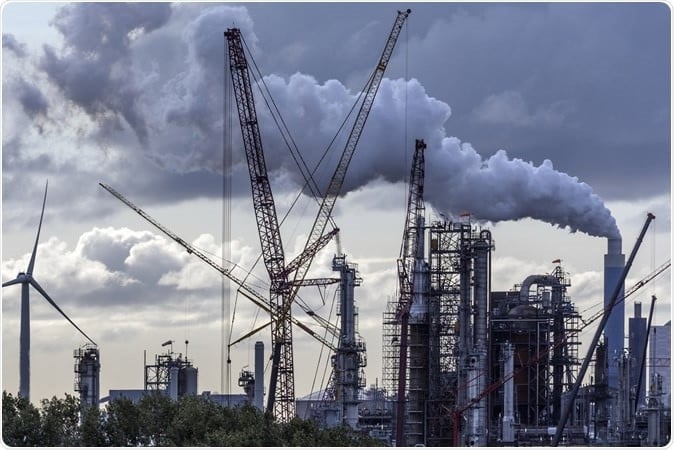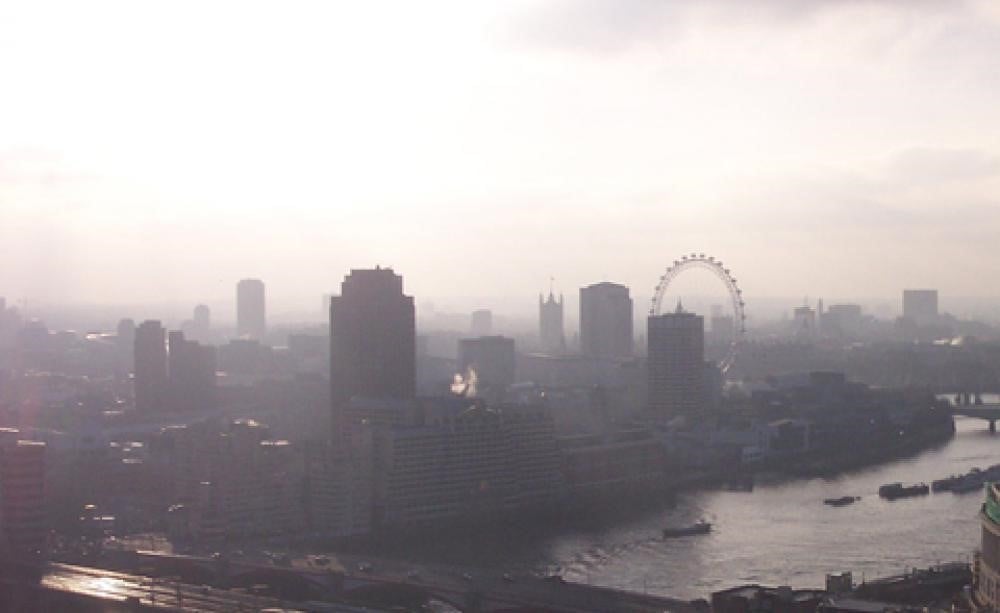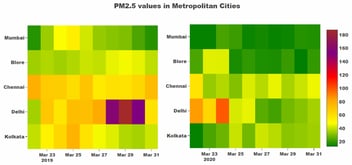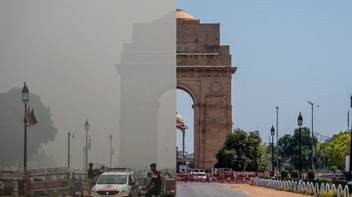COVID-19 mortality and air pollution – a new link
Updated on 6th August 2020 at 17:55 hrs
Air pollution is making the coronavirus pandemic more deadly, finds the results of several new studies.

A recent study in the Netherlands found that higher levels of air pollution were associated with increasing Covid-19 cases, hospital admissions, and deaths. The study considered more than 20 other factors, including average population density, age, household size, occupation, and obesity. A total of 355 Dutch municipalities were studied to identify the relationship between concentrations of PM2.5, NO2 and SO2 and Covid-19 cases, hospital admissions, and deaths.
“A one-unit increase in PM2.5 concentrations is associated with 9.4 more Covid-19 cases, 3.0 more hospital admissions, and 2.3 more deaths.”
The authors were careful to note that the correlation between air pollution and COVID-19 is not simply a result of disease cases being clustered in large cities where pollution may be higher. Similar findings were found when they excluded the major urban areas of Amsterdam, Rotterdam, Utrecht, and The Hague from the analysis.
In a second study, researchers at the Harvard T.H. Chan School of Public Health evaluated the link between air pollution and COVID-19 mortality. They studied 3,080 counties in the United States, covering 98% of the US population.
They found that long-term exposure to PM2.5 is associated with worsened severity of COVID-19 infection symptoms and an increased risk of death. Like the Netherlands study, even small increases in air pollution were associated with large increases in mortality linked to COVID-19, at a magnitude that was 20 times what would have been estimated.
“An increase of 1 mg/m3 in long-term PM2.5 exposure is associated with an 8% increase in the COVID-19 mortality rate.”
Similar patterns are seen in the UK, Italy, and China
Others have recently pointed to similar findings in other countries. COVID -19-related death is increased in northern Italy, where pollution is the highest, vs. the southern part of the country. Researchers at the University of Siena pointed out that the mortality was 12% in these more polluted regions, as compared to 4.5% in the rest of the country. This increased mortality persisted even after correcting for other factors such as age and socioeconomic status.
It is important to note that these studies prove only association and not causation. However, the strength of the association has caused many public and environmental health experts to sit up and take notice.
Have you read?
Government think tanks issue advisories on air pollution an COVID
A recent report by the UK government mentions that there is “compelling evidence” that air pollution increases the number and severity of COVID-19 infections.
The experts conclude that, for future management of the pandemic, further investigation is needed on the potential interactions between air pollution and COVID-19.

Particulate matter – a carrier for coronavirus?
Scientists have also proposed that particulate matter in the air could act as a carrier for virus particles. A study in Northern Italy reported the detection of SARS-CoV-2 RNA on particulate air pollution.
Researchers from the University of Bologna in Italy, who led the work, suggested that in conditions of atmospheric stability and high concentrations of PM, COVID-19 could create clusters with outdoor particulate matter (e.g. PM2.5 and PM10) and, by reducing their diffusion coefficient, enhance the persistence of the virus in the atmosphere.
In plain English, this means that COVID-19 likely hangs around for longer when air pollution levels are higher.
Air pollution and the severity of COVID-19 infection: What’s the cause?
Exposure to air pollution makes an individual susceptible to infection with COVID-19 through several mechanisms.
First, pollutants in the air damage the lungs in several ways, making them more susceptible to infection by COVID-19. This includes direct damage to the cilia, the microscopic hairs in the upper airways that help keep pathogens out. In addition, air pollution also sets off inflammatory reactions in the airways and the lining of the lungs, making it easier for pathogens such as COVID-19 to cause extensive damage.
Second, air pollution is associated with several co-morbid conditions such as heart disease, asthma, obesity, and diabetes – all of which are associated with higher morbidity and mortality from COVID-19 infection.
The latter effect partly explains widely reported finding that mortality due to COVID-19 is higher in neighborhoods with lower socioeconomic status – often inhabited by minority groups with higher levels of air pollution exposure.
Managing the pandemic: What’s the way forward for air pollution?
The fight against COVID-19 is linked to the fight against air pollution. The worse the air quality, the higher the likelihood of death or serious illness from COVID-19.
To win this battle that we need effective vaccines, strong public health and preventative measures, and cleaner air.
“Nature is sending us a message that if we neglect the planet, we put our own well-being at risk.”
Inger Andersen, Executive Director, United Nations Environment Program
Reducing emissions at the source, increasing energy efficiency, and – where needed – technological solutions such as Pure Skies can help reduce air pollution and a large number of diseases it causes.

.svg)
.webp?width=1080&height=1080&name=Free%20Case%20Study%20Steel%20Plant%20(1).webp)







Post Comments